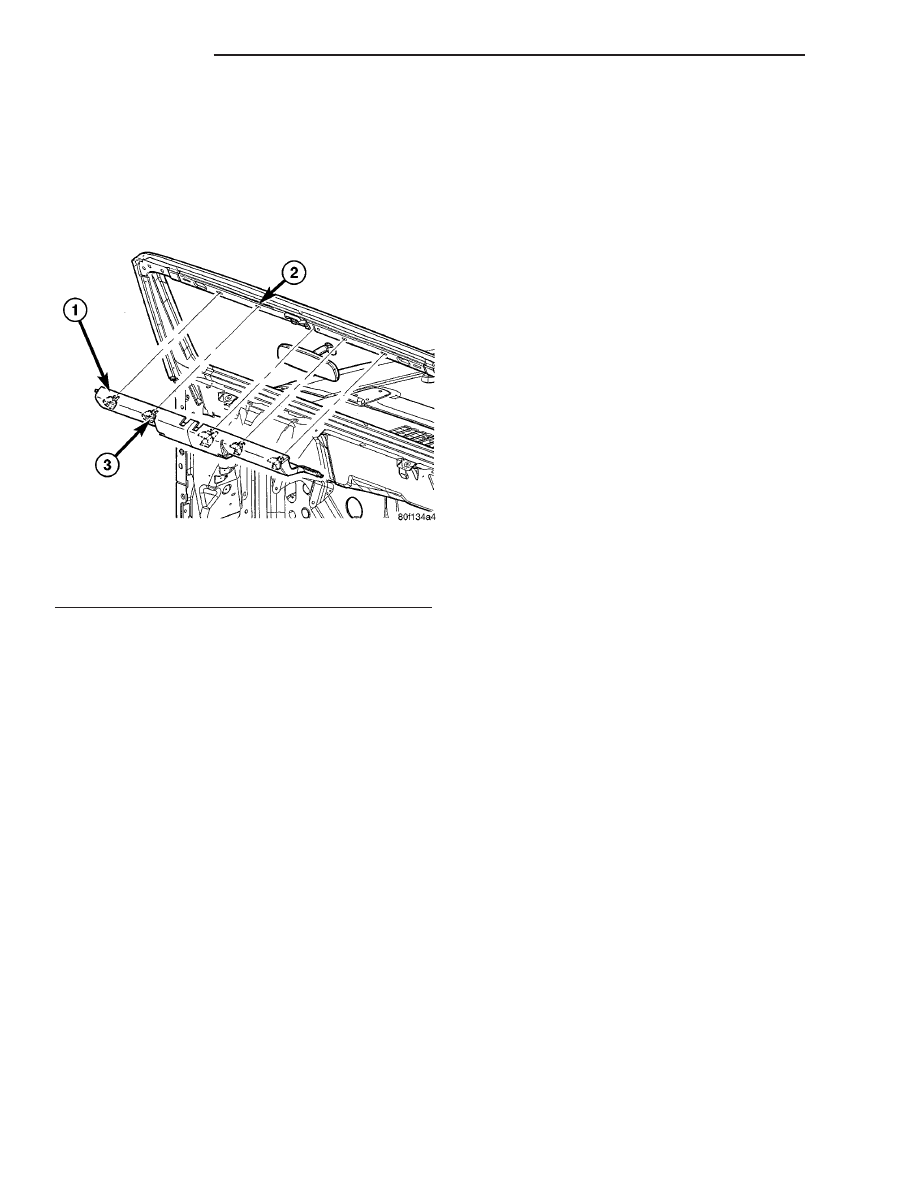Jeep Wrangler TJ. Manual - part 555

WINDSHIELD HEADER
REMOVAL
(1) Position both sun visors out.
(2) Using a trim stick C-4755 or equivalent, sepa-
rate the retaining clips and remove the trim from
behind the a-pillar trim panels. (Fig. 16)
INSTALLATION
(1) Install the windshield header trim and position
the end tabs behind the a-pillar trim.
(2) Seat the retaining clips fully.
SPORT BAR - SPEAKER POD
REMOVAL
(1) On vehicles equipped with a soft top, unzip the
side panel next to the pod.
(2) On vehicles equipped with a hard top, unclip
the windshield clamps.
(3) Remove the bolts on side of the top next to the
pod and loosen the opposite side bolts. (Refer to 23 -
BODY/REMOVEABLE
TOP/HARD
TOP
-
REMOVAL)
(4) Lift up the side of the top to gain access to the
pod bolts and support with a block of wood or similar.
(5) Remove the two bolts securing the pod to the
sport bar.
(6) Separate the pod guide pin from the sport bar
and disconnect the electrical connector.
INSTALLATION
(1) Connect the pod electrical connector and install
the pod onto the guide pin.
(2) Install the bolts and tighten to 68 N·m (50 ft.
lbs.).
(3) On vehicles equipped with a hard top, install
the hard top. (Refer to 23 - BODY/REMOVABLE
TOP/HARD TOP - INSTALLATION)
(4) On vehicles equipped with a soft top, zip up the
side panel.
Fig. 16 WINDSHIELD HEADER MOLDING
1 - WINDSHIELD HEADER TRIM
2 - WINDSHIELD FRAME
3 - SPRING CLIPS (4)
23 - 62
INTERIOR
TJ